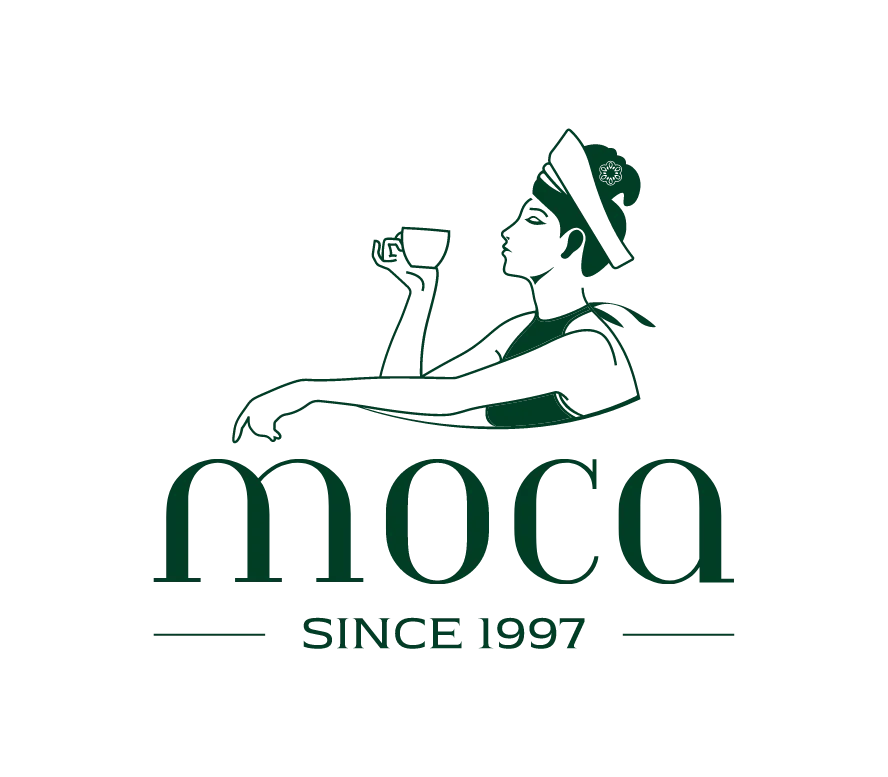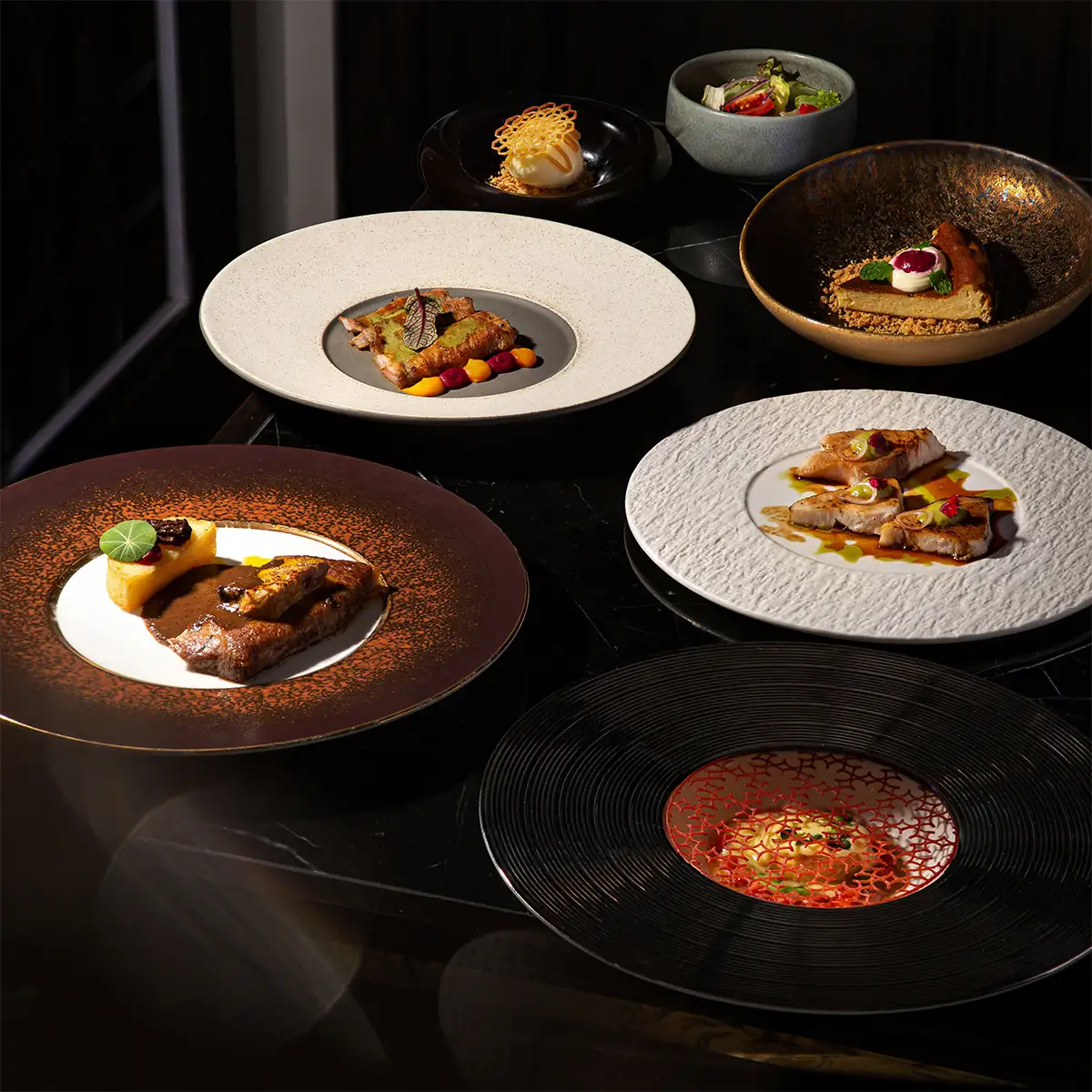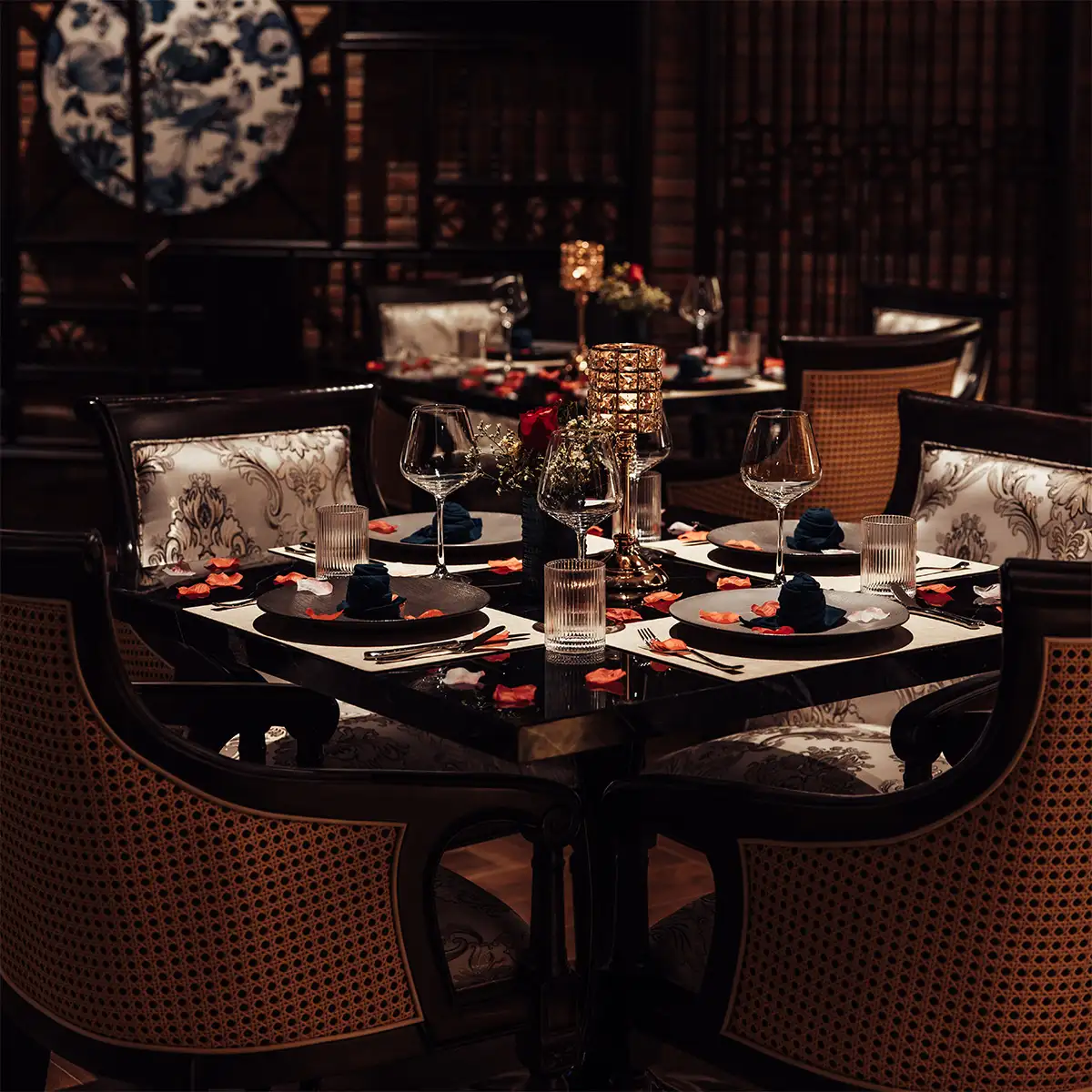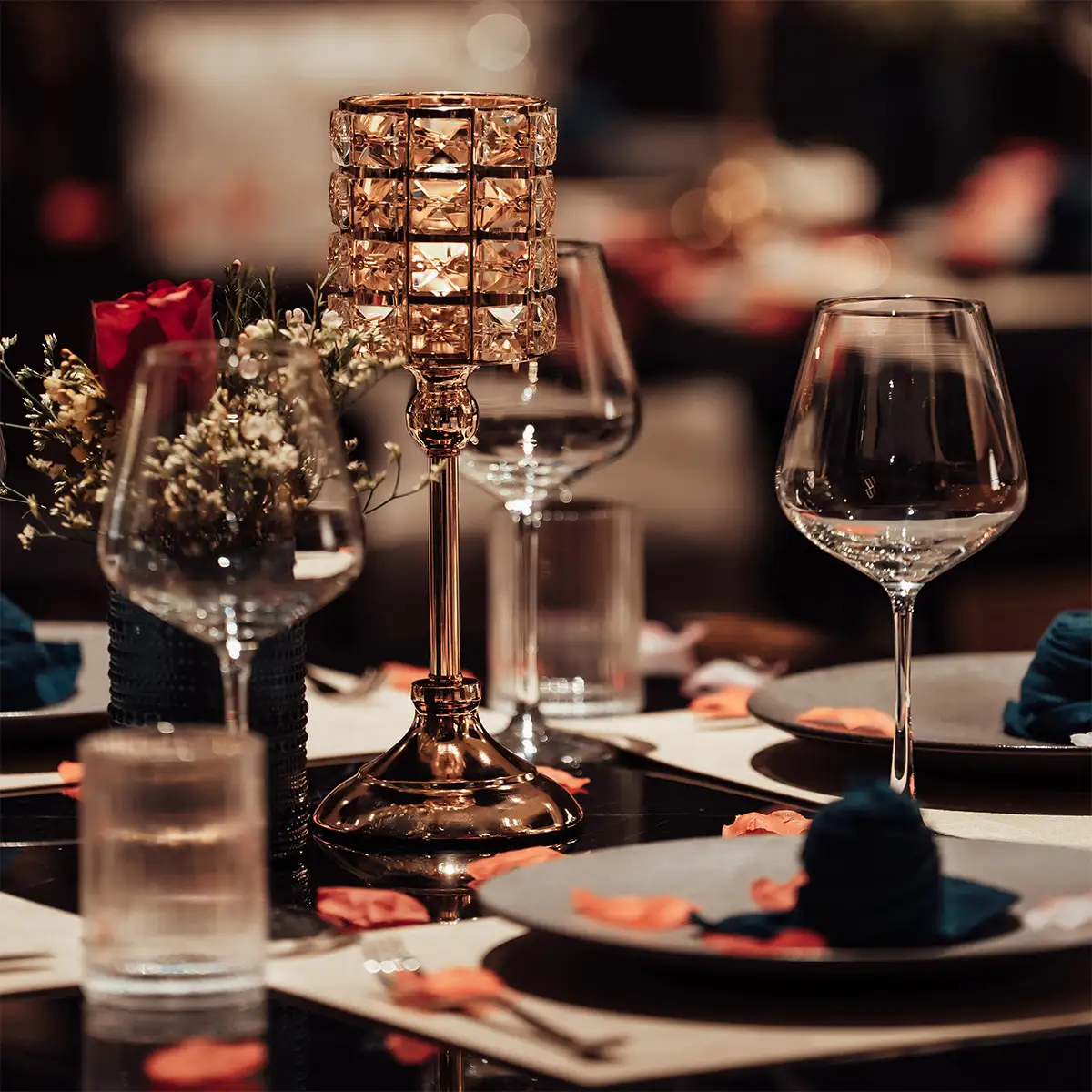- 1. The science of sourcing: Understanding premium beef cuts
- 1.1. Global grading systems and quality benchmarks
- 1.2. Essential fine dining cuts and characteristics
- 1.3. Provenance and ethical sourcing
- 2. Preparation techniques: Mastering flavor and texture
- 2.1. The critical role of aging
- 2.2. Precision cooking methods
- 2.3. Temperature accuracy and guest preference
- 3. The complete steak experience: Pairings and presentation
- 4. Moca Dining: Precision in premium beef
- 5. Maintaining fine dining standards
In gastronomy, few dishes rival the beef steak in prestige. Elevating it from a simple meal to a fine dining masterpiece requires precision, artistry, and high standards. At Moca Dining, the perfect beef steak experience rests on three pillars: exceptional sourcing, scientific preparation, and masterful presentation, delivering more than a meal—an unforgettable culinary journey.
1. The science of sourcing: Understanding premium beef cuts
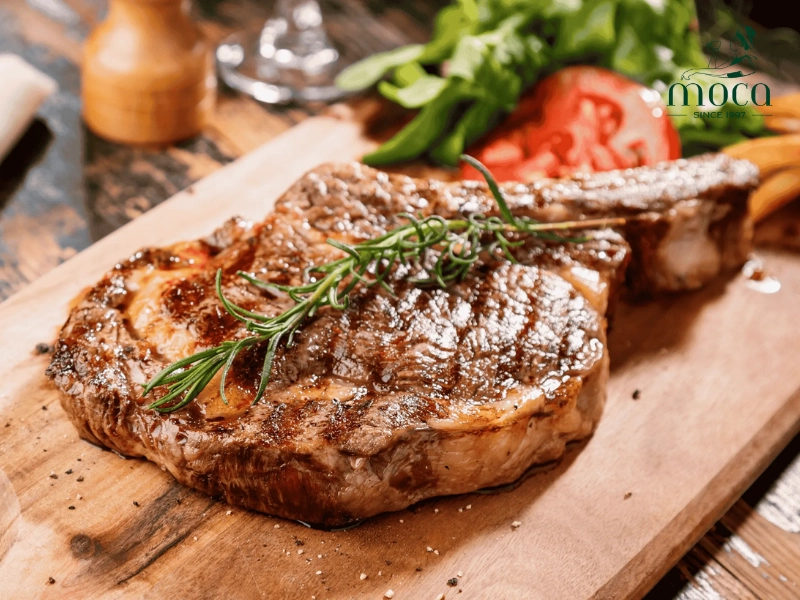
From global grading to ethical sourcing—mastering the science of premium beef is the foundation of a world-class steak experience at Moca Dining.
The journey to an unforgettable steak begins long before it reaches the kitchen. It starts with an unwavering commitment to sourcing only the most exceptional premium beef from around the globe. This is not a matter of opinion, but of objective, measurable quality.
1.1. Global grading systems and quality benchmarks
Understanding beef grading is fundamental. In the United States, the USDA system is the benchmark. USDA Prime, the highest grade, is distinguished by its abundant marbling—the fine threads of intramuscular fat that melt during cooking, ensuring unparalleled juiciness, flavour, and tenderness. USDA Choice is a step below, offering good quality but with less marbling.
However, for the ultimate in luxury, we turn to Japan. The legendary wagyu steak is graded using the Japanese Beef Marbling Score (BMS), which runs from 1 to 12. A steak earning the coveted A5 Wagyu designation must have a BMS of 8 to 12, signifying a cut so intensely marbled that it delivers a uniquely rich, buttery texture that dissolves on the palate. Beyond Japan, producers in Australia have developed their own world-class Wagyu programs, often cross-breeding with other cattle to create a product that balances intense marbling with a more robust beef flavour. Similarly, grass-fed beef from select regions offers a leaner profile with a distinct, terroir-driven taste.
1.2. Essential fine dining cuts and characteristics
Not all cuts are created equal. In a fine dining context, three cuts reign supreme for their distinct attributes:
- Tenderloin (Filet Mignon): Celebrated for its extraordinary tenderness and lean profile, the filet mignon offers a subtle, delicate flavour. Its buttery texture makes it a perennial favourite for those who prize softness above all.
- Ribeye (Entrecôte): The undisputed king of flavour. The ribeye is defined by its generous marbling and the central "eye" of fat that bastes the meat from within as it cooks. This results in a deeply beefy, rich, and succulent experience.
- New York Strip (Sirloin): Offering a superb balance of qualities, the New York strip provides a firmer chew than a filet and a robust flavour that rivals the ribeye, but with a slightly leaner profile. It is the connoisseur's choice for a classic steakhouse experience.
1.3. Provenance and ethical sourcing
In modern haute cuisine, "where" the beef comes from is as important as the cut itself. Traceability is paramount. At Moca Dining, we insist on knowing the specific farm, the lineage of the cattle, and the sustainable, ethical practices employed in their raising. This commitment ensures not only superior quality but also respect for the animal and the environment, a value we believe our guests share.
2. Preparation techniques: Mastering flavor and texture
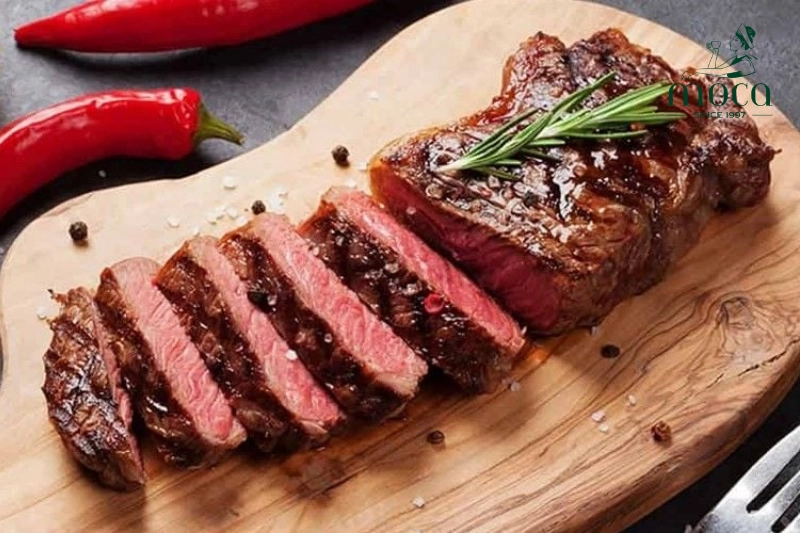
From expert aging to precise temperature control, Moca Dining’s preparation techniques ensure every steak is a fine dining masterpiece.
Once the perfect cut is sourced, the chef's technical mastery becomes the focus. Precision at this stage is non-negotiable and is what separates a good steak from a transcendent one.
2.1. The critical role of aging
Aging is a controlled process that dramatically enhances both the flavour and texture of beef.
- Wet aging: The beef is vacuum-sealed in its own juices. This process, typically lasting a few weeks, primarily tenderizes the meat through enzymatic action and prevents moisture loss.
- Dry aging: This is the more artisanal method. The beef is aged in a climate-controlled environment with precise temperature, humidity, and airflow. Over 28 to 60 days or more, two crucial things happen: moisture evaporates, concentrating the beef's flavour, and enzymes break down connective tissues, creating profound tenderness. The result is a dry-aged steak with complex, nutty, and earthy flavour notes that are impossible to achieve otherwise. Research published in journals like the Journal of Animal Science and Technology has scientifically documented how this process develops unique flavour compounds.
2.2. Precision cooking methods
The goal of cooking a perfect steak is to achieve a specific internal temperature while creating a flavourful exterior crust.
- Sous vide: Many high-end kitchens utilize the sous vide technique, where the steak is vacuum-sealed and submerged in a water bath held at the precise target temperature. This guarantees perfect, edge-to-edge doneness before the final sear.
- High-heat searing: The final, critical step is a rapid sear on an intensely hot surface. This triggers the Maillard reaction, a chemical process between amino acids and reducing sugars that creates the deep brown, savoury crust responsible for much of the steak's flavour.
- Resting: Allowing a steak to rest after cooking is a scientific necessity. Immediately after being removed from the heat, the muscle fibres are tense and have expelled juices toward the center. Resting for 5-10 minutes allows the fibres to relax and reabsorb those juices, ensuring every bite is moist and flavourful. Cutting into a steak too soon results in a dry piece of meat and a pool of lost flavour on the plate.
2.3. Temperature accuracy and guest preference
Executing the guest's desired temperature is a chef's professional responsibility. There is no room for error. These are the industry standards:
- Rare: 125°F / 52°C (Cool red center)
- Medium-Rare: 130-135°F / 54-57°C (Warm red center)
- Medium: 135-145°F / 57-63°C (Warm pink center)
At Moca Dining, we use calibrated digital thermometers to guarantee that every beef steak served meets the exact temperature requested by our esteemed guests.
3. The complete steak experience: Pairings and presentation
A fine dining beef steak is not served in isolation. It is the star of a carefully orchestrated ensemble of accompaniments, wine, and presentation that completes the experience.
Sauces and side dishes must complement, not overpower, the steak. Classic French sauces like a rich Béarnaise or a sharp Peppercorn reduction are timeless partners. Contemporary kitchens may also feature reductions made from regional ingredients that echo the steak's provenance. Side dishes are refined and elegant—a silken Truffle Pommes Purée, crisp-tender Asparagus with Hollandaise, or creamed spinach with a hint of nutmeg.
Wine pairing is a science in itself. The core principle is to match the wine's structure to the steak's richness.
- For fatty, robust cuts like a ribeye or a heavily marbled wagyu steak, a wine with high tannins and full body is essential. The tannins act as a palate cleanser, cutting through the richness of the fat. A classic choice would be a Cabernet Sauvignon from Napa Valley or a bold Bordeaux blend.
- For leaner cuts like filet mignon, a lighter-bodied red with more subtle, earthy notes is a better match. A sophisticated Pinot Noir from Burgundy or Oregon will complement the steak's delicate texture without overwhelming it.
Presentation is the final flourish. The fine dining approach is one of intentional minimalism. The plate is a canvas where the steak is the hero. It is served on heated porcelain to maintain its temperature, often pre-sliced to showcase its perfect interior, and finished with clean lines and a minimalist, functional garnish, such as a single sprig of thyme or a sprinkle of flaky sea salt.
4. Moca Dining: Precision in premium beef
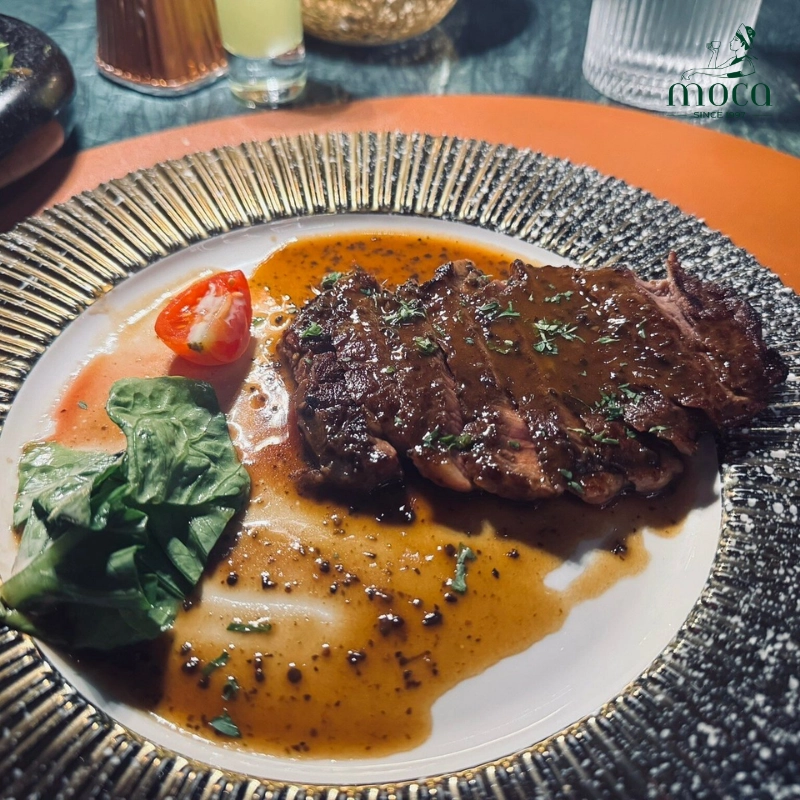
At Moca Dining, every steak reflects our uncompromising pursuit of perfection—from exclusive sourcing and expert technique to a personalized, world-class dining experience.
At Moca Dining, these principles are not just guidelines; they are the very essence of our philosophy. For our guests searching for an unparalleled wagyu steak near me, we offer a destination that embodies this commitment.
We have secured exclusive import agreements for A5 Wagyu directly from private farms in the Kagoshima Prefecture of Japan. Our in-house dry-aged steak program features USDA Prime beef aged for a minimum of 45 days, developing a flavour profile of unparalleled depth and complexity that is unique to our establishment.
Our signature steak preparation process involves a sous vide bath for absolute temperature control, followed by a final sear over imported Binchōtan charcoal. This specific charcoal burns at an extremely high temperature with no flame, creating a perfect crust without imparting any smoky impurities, allowing the pure flavour of the beef to shine.
Our menu allows for complete personalization, with a selection of house-made sauces, artisanal salts from around the world, and expertly crafted side dishes. For those looking for the definitive 'wagyu beef near me', our highly trained sommeliers are on hand to guide you through a complex and rewarding steak pairing journey, ensuring a truly memorable experience.
5. Maintaining fine dining standards
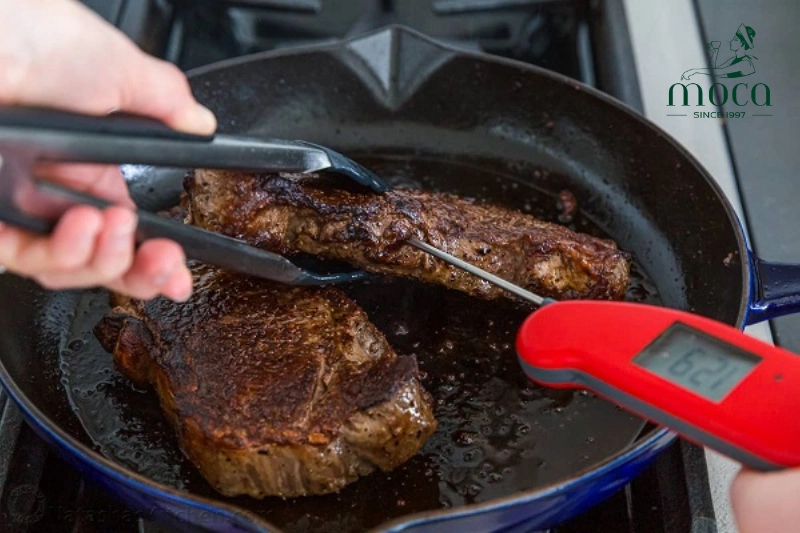
At Moca Dining, every step—from staff education to kitchen precision—is designed to uphold the highest standards of consistency and fine dining excellence.
Delivering this level of quality consistently requires a culture of excellence that permeates every aspect of our operation.
- Staff knowledge and education: It is imperative that our service staff can articulate with confidence the cut, provenance, aging process, and recommended cooking temperature of every beef steak on our menu. They are storytellers, connecting our guests to the intricate journey of the dish before them.
- Quality control and consistency: Rigorous protocols are in place to ensure every steak that leaves our kitchen meets the exacting specifications of both our chef and our guest. From verifying the weight of the cut to a final temperature check before plating, no detail is too small.
The creation of a world-class beef steak is a testament to the fact that true luxury lies in the mastery of details. It is an intricate dance of sourcing the absolute best premium beef, applying scientific technique with an artist's touch, and presenting the final creation with reverence and care. True fine dining steak is defined by this unbroken chain of quality, from the farm to your plate. For the definitive steakhouse experience—where sourcing, technique, and service converge to create something truly extraordinary—we invite you to reserve your table at Moca Dining. We also encourage you to explore our journal for further insights into wine pairings and the art of seasonal cuisine.
